Tom Clancy - Locked On
Здесь есть возможность читать онлайн «Tom Clancy - Locked On» весь текст электронной книги совершенно бесплатно (целиком полную версию без сокращений). В некоторых случаях можно слушать аудио, скачать через торрент в формате fb2 и присутствует краткое содержание. Год выпуска: 2011, ISBN: 2011, Жанр: Триллер, на английском языке. Описание произведения, (предисловие) а так же отзывы посетителей доступны на портале библиотеки ЛибКат.
- Название:Locked On
- Автор:
- Жанр:
- Год:2011
- ISBN:9781101566466
- Рейтинг книги:3 / 5. Голосов: 1
-
Избранное:Добавить в избранное
- Отзывы:
-
Ваша оценка:
- 60
- 1
- 2
- 3
- 4
- 5
Locked On: краткое содержание, описание и аннотация
Предлагаем к чтению аннотацию, описание, краткое содержание или предисловие (зависит от того, что написал сам автор книги «Locked On»). Если вы не нашли необходимую информацию о книге — напишите в комментариях, мы постараемся отыскать её.
Locked On — читать онлайн бесплатно полную книгу (весь текст) целиком
Ниже представлен текст книги, разбитый по страницам. Система сохранения места последней прочитанной страницы, позволяет с удобством читать онлайн бесплатно книгу «Locked On», без необходимости каждый раз заново искать на чём Вы остановились. Поставьте закладку, и сможете в любой момент перейти на страницу, на которой закончили чтение.
Интервал:
Закладка:
The man had many aliases, but forever more he would be known as Abdul Ibrahim. He was thirty-one, thin and tall, with a narrow face and deep-set eyes. He was also the operational chief for i>w mses,Lashkar-e-Taiba in southern India, and October 15 would be the last day of his life.
His orders had come in a phone call from Majid just three nights earlier. He’d met Majid several times before at a training camp in Muzaffarabad, Pakistan, and he knew the man to be a high-ranking member of the Pakistani Army and a commander in the ISI. The fact that Ibrahim did not know that Majid’s real name was Riaz Rehan was unimportant, as unimportant as the fact that the four other men who would go on this mission did not know the other aliases of Abdul Ibrahim.
Ibrahim and his cell had been operating in the Karnataka region of India for some time. They were no sleepers; they’d bombed a railroad exchange, four electrical power stations, and a water treatment facility, and they’d shot a policeman and firebombed cars in front of a television station. For LeT it was small-time stuff, but Abdul Ibrahim had been ordered by Majid to perform harassing operations against the population in a manner that would not put his cell into too much jeopardy. He’d long assumed he was being kept safe and in place for a major operation, and when Majid called him on his voice-over Internet line three days prior, it had been the proudest moment of Abdul Ibrahim’s life.
Following orders received in the phone call, Abdul Ibrahim had picked his five best operators, and they all met at their safe house in Mysore. Ibrahim appointed one of the men his successor as chief of operations. The young man was shocked to be told he would be in charge of Lashkar-e-Taiba ops in southern India in two-days’ time. The other four men felt lucky to be told they would be going with Abdul on a martyrdom operation in Bangalore.
They took the best weapons from the cache: four grenades, ten homemade pipe bombs, and a pistol and rifle for each of the five men. This along with nearly two thousand rounds of combined ammunition they packed into backpacks and suitcases along with a change of clothing. Within hours they were on a train to the northeast, and they arrived in Bangalore early in the morning of their second-to-last day.
A local man with Pakistani roots met them, took them to his home, and handed them the keys to three motorcycles.
Riaz Rehan himself had picked the target. Bangalore is often referred to as the Silicon Valley of India. With a population of six million, it possesses many of the largest technology companies in the huge nation, many located in Electronics City, a 330-acre industrial park in the western suburbs of Bangalore — more precisely in Doddathogur and Agrahara, former villages that had been swallowed up with the explosion of both population and progress here.
Rehan felt that Abdul Ibrahim and his four men would be slaughtered relatively quickly if they attacked this target. Electronics City had good security for a nongovernmental installation. But still, any success at all by Abdul Ibrahim and his men would send a symbolic message. Electronics City was a major outsourcing hub of India and the operations run from offices there involved hundreds of companies, large and small, around the world. Blowing up people and property here would affect, to one degree or another, many of the Fortune 500 companies, and this would ensure that the attack would have a huge amount of play in the Western media. Rehan reasoned that a single death here by the southern India cell of LeT would carry the value of twenty deaths of peasants in a Kashmiri village. He intended for Abdul Ibrahim’s act in Bangalore to create a thunderclap of terror that would reverberate across the globe and frighten the West, ensuring that India would not be able to downplay such an attack.
More attacks would follow, and with each ad with ettack the conflict between India and Pakistan would worsen.
Riaz Rehan understood all this because he was a Westernized jihadist, an army general, and an intelligence chief. All these titles attributed to just one man gave him another, more ominous identity — Riaz Rehan, aka Majid, was, above all, a master terrorist.
When Abdul Ibrahim and his four men arrived in Bangalore and fueled up their motorbikes, they immediately began reconnaissance on their target, because they had no time to waste. They found that the industrial park was covered with heavily armed security, both private guards and police. Further, the Central Industrial Security Force, the Indian paramilitary force in charge of government industrial installations, airports, and nuclear site security, was now working under contract for certain well-heeled private businesses in Electronics City. The CISF had even established checkpoints at the entrance to the industrial park. Ibrahim was certain he and his men would not be able to breach any of the major buildings themselves. He was dejected, but nevertheless he decided to spend much of the time until the attack driving around the perimeter of Electronics City, searching for a way in.
He did not find a way in, but on the final morning, just hours before his planned attack, he decided to pass by his target one last time in daylight. He traveled alone on his motorcycle along the Hosur Main Road, took the huge, modern Bangalore Elevated Tollway, a ten-kilometer flyover that ran between Madiwala and Electronics City, and he immediately found himself surrounded by dozens of buses packed with workers heading to their jobs from Bangalore proper.
Instantly he saw his mission before him. Abdul Ibrahim returned to the safe house in the city and told his men that the plans had changed.
They did not attack that night as he’d promised Majid. He knew his handler would be furious with him for disobeying a direct order, but he obeyed his other order and made no contact with his handler, nor any other LeT asset. Instead he destroyed his mobile phone, prayed, and went to sleep.
He and his men awoke at six a.m. They prayed again, drank tea in silence, and then climbed aboard the three motorcycles.
They arrived at the flyover at eight a.m. Abdul rode his own bike two hundred meters behind the second motorcycle, which itself was two hundred meters behind the first. He carried the pipe bombs and grenades in his backpack slung on his chest to where he could reach into the bag and pull them out while he drove.
The first bike pulled alongside an articulated bus with fifty passengers inside. As the driver of the motorcycle advanced slowly along the long, two-sectioned vehicle, the rider pulled an AK-47 from a bag in his lap, its wire stock folded to shorten its length. The gunman calmly and carefully lined his sights up on the side of the bus driver’s head, and he pressed the trigger. With a short pop and a burst of gray smoke, the bus driver’s window shattered and the man tumbled out of his seat, and the huge bus careened sharply to the right and then jackknifed. It hit several other cars as it skidded at speed, then it slammed into the concrete wall of the flyover, striking more cars that had pulled quickly off the road in an attempt to get out of the way.
Some in the bus died in the crash, but most were merely wounded after having been thrown from their seats. The first motorcycle moved on, leaving the wounded bus behind as it continued up the road, attacking more vehicles in its path.
But the second motorcycle, also carrying a driver and a gunman, passed by the crash thirty seconds late secondsr. The rear rider’s AK barked, and his seventy-five-round drum spun, releasing its supersonic bullets through the barrel. The rounds tore into the bus and into the wounded, killing the men and women as they tried in vain to scramble free of the wreckage, and killing those in other vehicles who had pulled over to help.
Читать дальшеИнтервал:
Закладка:
Похожие книги на «Locked On»
Представляем Вашему вниманию похожие книги на «Locked On» списком для выбора. Мы отобрали схожую по названию и смыслу литературу в надежде предоставить читателям больше вариантов отыскать новые, интересные, ещё непрочитанные произведения.
Обсуждение, отзывы о книге «Locked On» и просто собственные мнения читателей. Оставьте ваши комментарии, напишите, что Вы думаете о произведении, его смысле или главных героях. Укажите что конкретно понравилось, а что нет, и почему Вы так считаете.
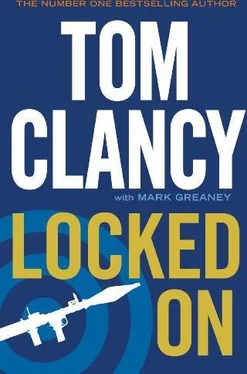
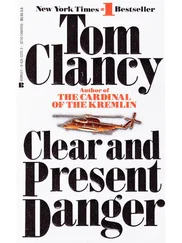

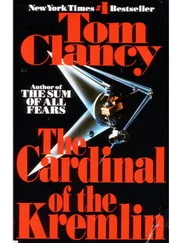

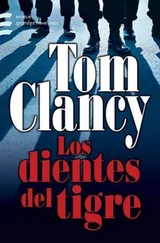
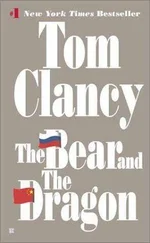
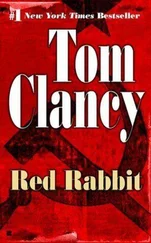


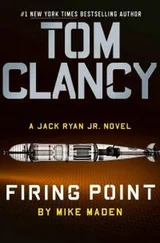
![Александр Ирвин - Tom Clancy’s The Division 2. Фальшивый рассвет [litres]](/books/417744/aleksandr-irvin-tom-clancy-s-the-division-2-falsh-thumb.webp)